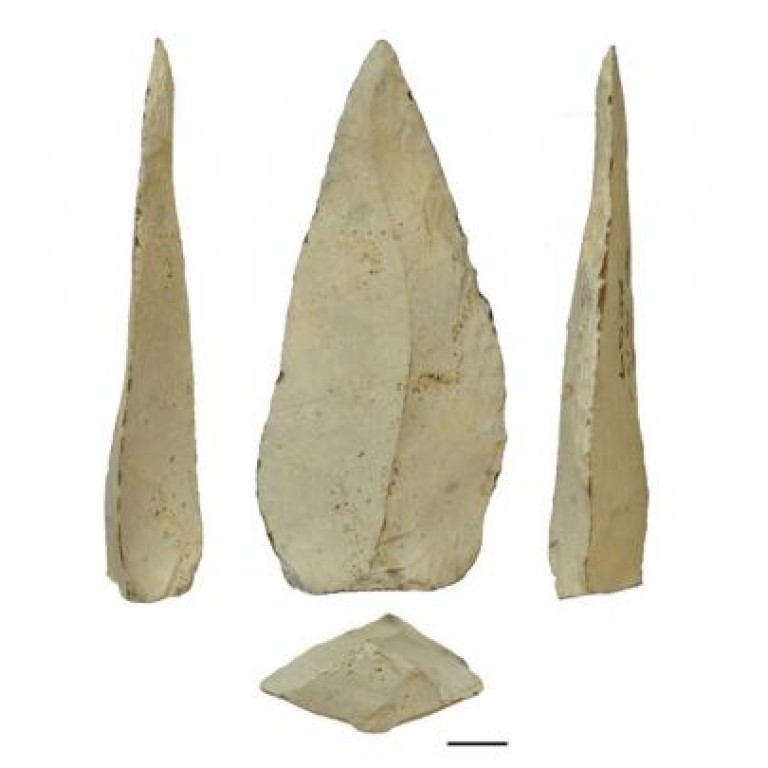
Ancestors developed stone-tipped weapons earlier than thought
Archaeological find pushes back use of stone-tipped weapons by 200,000 years
Scientists have found evidence that human ancestors used stone-tipped weapons 200,000 years earlier than once thought, changing notions about the capabilities of prehistoric people.
Spears topped with stone points, most likely used for hunting large game and self-defence, were an important advance in weaponry, according to Jayne Wilkins, lead author of the paper published yesterday in the journal .
The spear tips in question came from one of the Stone Age archaeological sites in South Africa called Kathu Pan 1, and were used 500,000 years ago by a human species called . It was long held that Neanderthals and first lashed stone tips to spears 200,000 to 300,000 years ago.
The complex steps required to put a sharp-tipped stone at the end of a wooden spear, called hafting, means these ancestors had to engage in planning and other goal-driven thought processes long before a hunt took place, Wilkins said.
"This changes the way we think about early human adaptations and capacities before the origin of our own species," said Wilkins, a graduate student in the University of Toronto's anthropology department. "Neanderthals and humans did not independently invent the technology, but they inherited it from their last common ancestor."
The spears were an improvement because the hunters could get further out of harm's way and were more likely to make a successful kill, she said.
The stone tips were recovered between 1979 and 1982 during excavations. In 2010, the site was dated to about 500,000 years.
In the study, researchers replicated the stone points, attached them to spears and then shot them at a dead animal. The damage to the stone points was similar to that seen on the 500,000-year-old points, Wilkins said. The stone points also fitted the size and shape of Stone Age points.
"This technology would also have provided another layer of protection from other carnivores, Wilkins said.
Other researchers had linked hafted technology to language "because the sequential steps of combining materials to form a spear is like a recipe that must be followed exactly to produce a result that makes sense", Wilkins said.
"In that way, hafting is analogous to creating a grammatical sentence," she said.
